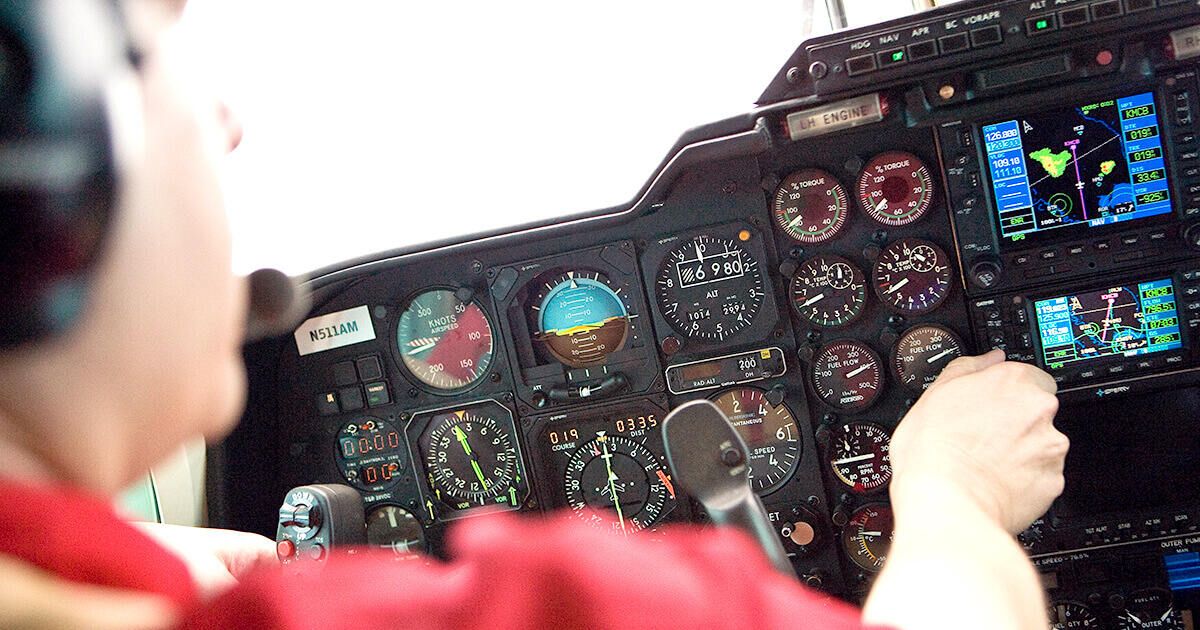An opinion piece in Forbes Magazine suggests the controversial rollout of 5G cell service will be pushed back a month or more over concerns about possible interference with radar altimeters. The column, by Ike Brannon, a fellow at Jack Kemp Foundation, says the rollout “may have to wait until after Christmas.” The switch was supposed to be thrown in 46 major markets on Dec. 5. Brannon doesn’t mention a source for the thesis of the column, which decries FAA interference in an issue that he maintains should be the purview of the Federal Communications Commission.
As we reported earlier, the FAA said in a letter that it had a “deep concern” that 5G would affect the altimeters and issued a Special Airworthiness Information Bulletin describing those concerns. It hasn’t taken any action yet but the issuance of the bulletin implies there’s another shoe to drop. Shortly after the FAA bulletin was released, all the major aviation organizations signed a letter to the National Economic Council calling for a delay in the rollout and formation of a working group to sort out the issue. The 5G signals will be in the 3700-3980 slice of radio spectrum known as the C Band. Radar altimeters use 4200-4400 and the fear is the powerful cell signals will interfere with the altimeters, which are a key component of modern instrument landing systems.




































There’s politicking going on, such as by Bob O’Donnell in USA Today.
And botched logic by Ike Brannon who ignores that the FAA is responsible for aviation safety in USA.
Complete with photos of aircraft panels that do not have a radio altimeter in them. Bad enough from sloppy MSM, inexcusable from AvWeb.
There may be a question of why the FAA is only now objecting. Journalists would dig into debates and behind-scenes activity.
Look again Keith. The radio altimeter is right there, between the main altimeter and the vertical speed indicator. Sloppy commenting is inexcusable.
A French airline pilot told me that France prohibits 5G towers close to IFR airports. This was accepted from the start, so 5G is rolling out just fine there.
Until you start having an increase in CFIT crashes because the 5G signals interfered with the radar altimeters that are also used for GPWS.
Again, I wish I was a lawyer… they are going to be sued no matter what if a plane or helicopter crashes and there is even a remote chance it was involved.
Just like when the tire company gets sued when a plane stalls on final… maybe the tire was the cause? Doesn’t matter. If people were told the wind resistance of the tires slows planes… yea, it is time to sue.
They are about to find out why it is so expensive to fly.
Sloppy reporting by Ike Bannon: the FAA and FCC have been “discussing” this interference for over 5 years, it isn’t a last-minute objection like he claims. He also fails to mention how Canada and Europe have restricted 5G ground tower stations near airports so as to reduce the possibility of interference.
Didn’t the electronics manufacturers have to meet some FCC standards when they designed and built Approved radar altimeters? Why isn’t anyone calling out the FCC for changing the rules after the equipment is already in the field?
In many countries 5G has already been rolled out. US airlines regularly fly to those countries. Are there any reports of failing Radar Altimeters from those airlines flying into crowded areas such as Asia or Europe?
The two can work in harmony IF:
1.) The 5G systems stay exactly on frequency, and
2.) Th harmonics are properly filtered out of their signal
Those are big IF’s. Yes, we have the technology to accomplish this. Had it for years. And it has drifted for years. Going back 25-30 years ago, I had a two- way radio system for my business, as cellular didn’t logistically or affordable exist. Living at a very high point of our community and having an 88’ tower gave me great coverage. That is, until one day the most awful squawking sound began to annihilate my calls. Turned out to be a paging service several MHz below “my” frequency. Transmitter drift. It took several calls to them, the last one with threat of FCC intervention, to get it corrected. That was a major inconvenience to me, but would be much much worse to aircraft nav. Just sayin’!
It’s actually unclear if there even is a problem, everything is hypothetical at this point. If there is, though, it’s the same problem debated in the GPS dust up. It isn’t a problem of defective equipment, harmonics, spurious emissions, all that, because that can crop up with every service across the spectrum and existing regulations & processes can deal with it. The actual situation is we have a base of installed equipment that may – or may not – be incapable of rejecting or ignoring signals outside but near its own licensed operating frequencies. What we are really debating is whether the value of protecting the legacy system from possible painful, expensive & disruptive upgrade exceeds the value of full & efficient use of the limited frequency spectrum. Or, more likely, just which viewpoint can muster the most political horsepower.
From what I have seen, the major issue is that the radar altimeters have a very wide front end, allowing interference from transmitters well away from their operating frequency.